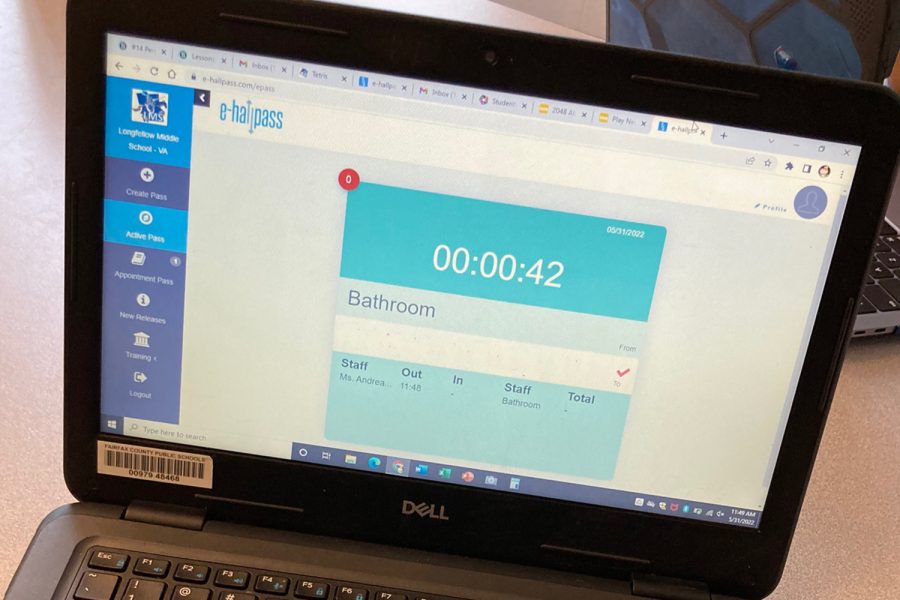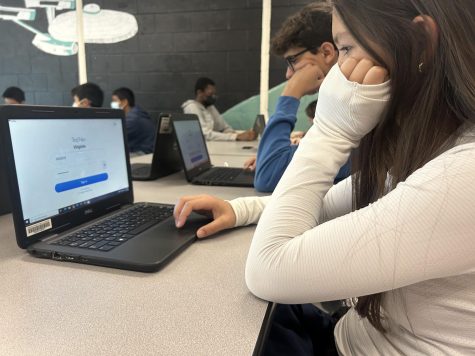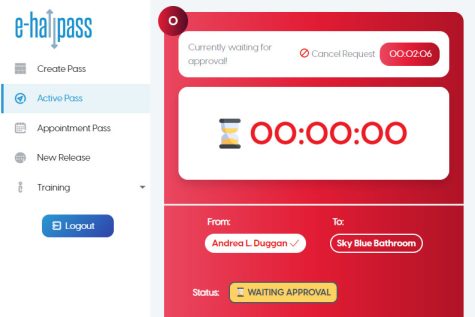Verdict Still Pending on E-Hallpass System Trial
The introduction of the e-hallpass has sparked many opinions across Longfellow. Students, administrators, and teachers all have their own opinions about whether it has helped or inconvenienced their school day.
According to Principal Dr. Jim Patrick, Longfellow is one of a few schools piloting the e-hallpass system. They started the process when Mr. Vigil and Ms. Reed visited Langston Hughes Middle School to see how they were implementing the program.
“We got some feedback, and we implemented the system from there,” he said.
Last year, Longfellow started using Google Drive for hall passes, but there were issues with the system, so they were looking for something to better manage that information.
“It was hard to know when a student was in the hallway whether they had passed or not,” explained history teacher Jim Bermudez. The e-hallpass system, he said, gives teachers more accountability for where people are.
“During Lancer time, when I was doing the administrative role, I would ask students where they were going,” said Bermudez, “and they would say to me, oh, well, I got an email from a teacher, and they didn’t have a way of proving this. Now I can just look it up and be like, okay, well, I see where you’ve come from. I know how long you’ve been gone for. I know where you’re supposed to go. So in that sense, there is more of an ability to figure out where people are and what they’re doing.”
According to Spanish teacher Eric Watson, the teachers didn’t have much say in implementing the system. He also felt that they didn’t account for students in the trailers, where his classes are located.
“It takes more than five minutes to go to the door, get in, go to the bathroom, and get back, especially when located outside.”
This is one of the many scenarios administration hopes to iron out. They are very much looking at this year as a chance to try out the system and see what issues crop up. Mr. Watson pointed out a few of the questions.
“Not all students have their computers. In addition to this, the computers sometimes are not always charged,” Watson said, saying that teachers were not told what to do if this situation occurred. “I also find it a little frustrating because when I’m teaching throughout the classroom, and a student needs to go somewhere, I get a notification on my computer.” He sometimes finds it easier to simply give them a verbal okay rather than going to the computer to log the pass.
Many students are not fans of the system either.
“The old one was easier to use,” said seventh grader Divya I. “ I could just scan it with my phone, and you just had to ask the teacher to go, and then you can just leave.”
Another complaint is that it feels controlling, and some think it’s creepy. Students referenced it feeling a little like “big brother.”
Journalism teacher Andrea Duggan is generally a fan of the system.
“I have a hard time with short-term memory, so it is quite helpful to know who is out of the room and for what reason,” she said. “It is especially helpful for students going on interviews because the teachers on the other end get a little head’s up that the students are on their way.”
As to the accusations of creepiness, Duggan pointed out that students have always had to ask for passes, and teachers have always been responsible for knowing the whereabouts of students in their care. This doesn’t change anything. Nonetheless, in a world where everything we do is tracked by our phones, it still feels like an invasion of privacy when we are forced to participate in this process actively.







